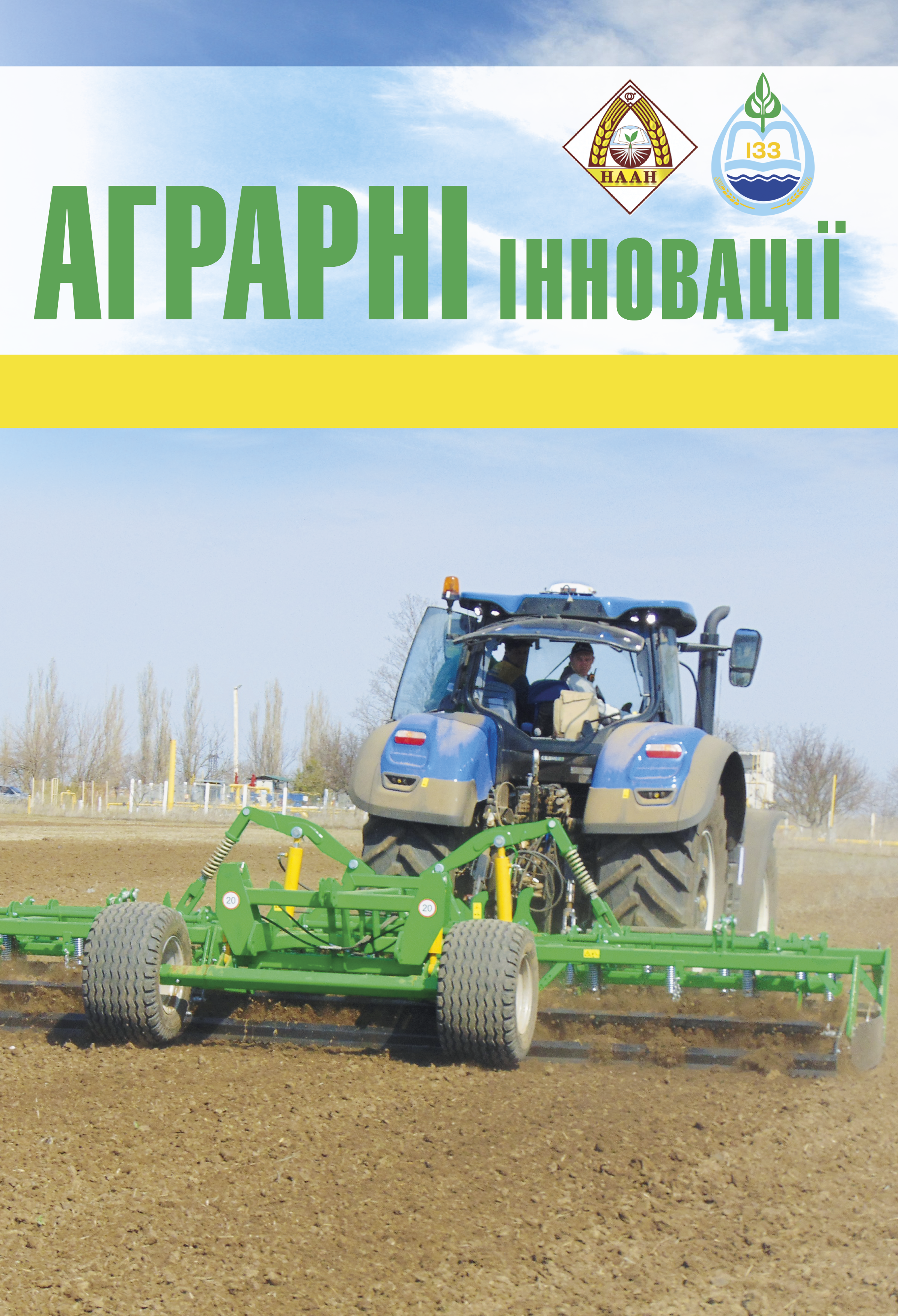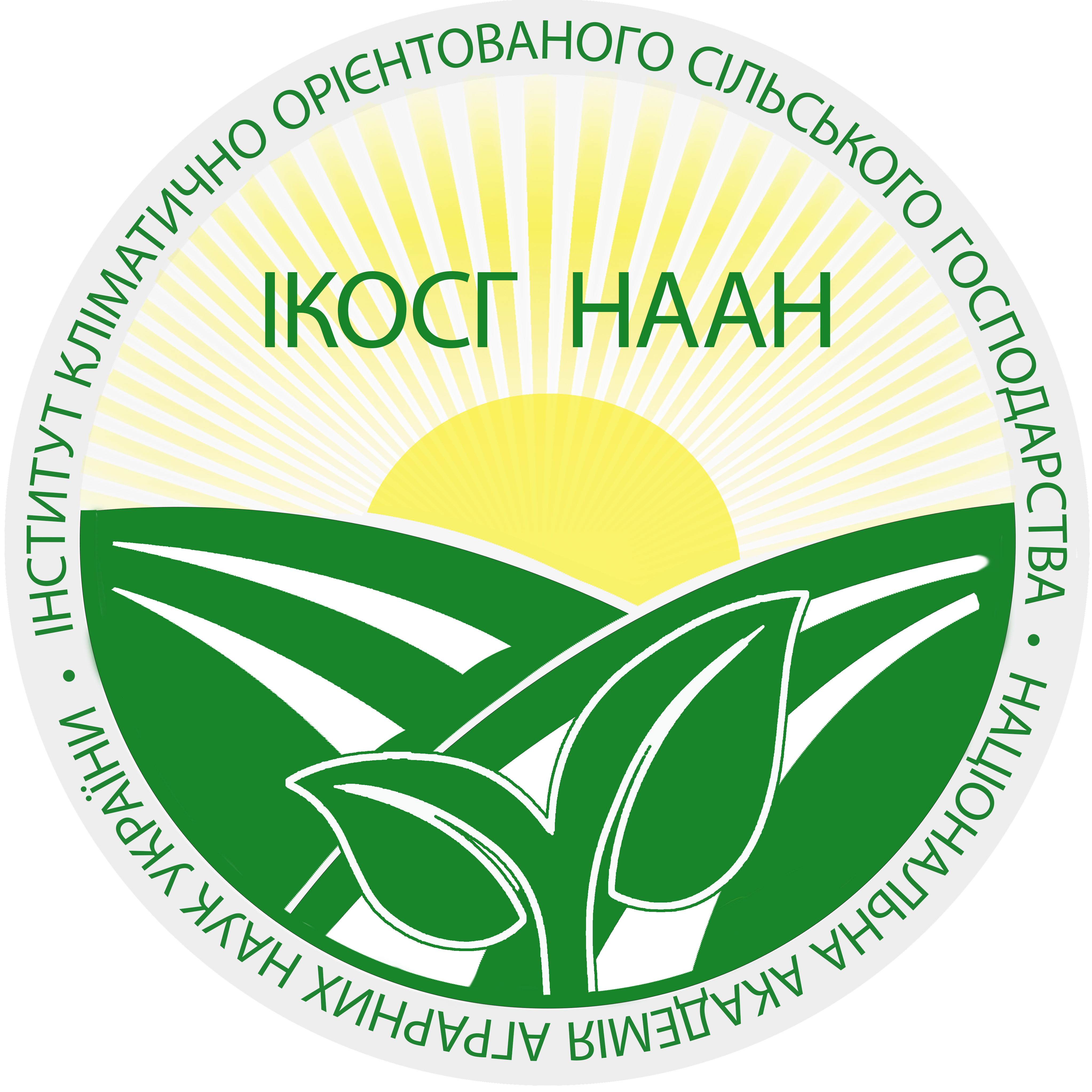Біологія та шкідливість квасолевого зерноїда на квасолі звичайній
Анотація
Мета. Дослідити у польових умовах та під час зберігання біологію та шкідливість квасолевого зерноїдана квасолі звичайній ранньостиглих, кущових сортівв умовах Харківської області. Методи. Дослідженняпроводили в Навчально-науково-виробничому центрі «Дослідне поле Докучаєвське» Державного біотехнологічного університету та у Державному підприємстві «Дослідне господарство «Елітне»» Інститутурослинництва ім. В. Я. Юр’єва НААН України протягом 2023–2024 рр. на двох сортах квасолі звичайної:Вавельська та Чорна черепаха. Використовувализагальноприйняті методики: косіння ентомологічнимсачком, візуальний огляд рослин та розтин бобів і зеренквасолі. Результати. Вивчено біологічні особливостірозвитку та фенологію квасолевого зерноїда на квасолі звичайній у польових умовах та під час зберігання.Даний шкідник з’являвся на посівах культури у І декаділипня та встигав пройти один життєвий цикл, заселяв16–34 % бобів та 10,4–19 % зерен. Встановлено, що квасолевий зерноїд надавав перевагу сорту Вавельська.Під час зберігання A. obtectus мав три генерації.Живлення личинок брухуса всередині зерен квасоліспричиняло зменшення маси 1000 насінин на 19–26 %та зниження лабораторної схожості на 13,2–100 %.У сховищі відмічалося сильніше пошкодження фітофагом насіння квасолі звичайної сорту Чорна черепаха.Висновки. Зафіксовано додаткове живлення імаго брухуса на квітах квасолі. Самки відкладали яйця на сформовані боби. В одному зерні розвивалися одна, рідшедві – три личинки шкідника. У роки досліджень квасолевий зерноїд у польових умовах мав одне покоління,а у сховищі – три. Середня заселеність бобів брухусому польових умовах становила 25 %, сильніше пошкоджувався сорт Вавельська. Доведено вплив кількості вихідних отворів у зерні квасолі на масу 1000 насінинта лабораторну схожість квасолі звичайної. При наявності п’яти та більше пошкоджень у зерні насіння повністювтрачало схожість незалежно від сорту.
Посилання
2. Насіння сільськогосподарських культур. Методи визначення якості. ДСТУ 4138-2002. Київ: Держспоживстандарт України, 2003. 170 с.
3. Станкевич С. В., Забродіна І. В., Васильєва Ю. В., Туренко В. П., Кулєшов А. В., Білик М. О. Моніторинг шкідників і хвороб сільськогосподарських культур. Харків: ФОП Бровін О. В., 2020. 624 с.
4. Томашевська O. Перспективи виробництва квасолі в контексті нішевої диверсифікації сільського господарства та нарощування його експортного потенціалу. Actual Problems of Economics. 2024. Vol. 3. № 273. Рр. 76–86. DOI: 10.32752/1993-6788-2024-1-273-76-86.
5. Alvarez N., McKey D., Hossaert-McKey M., Born C., Mercier L., Benrey B. Ancient and recent evolutionary history of the bruchid beetle, Acanthoscelides obtectus Say, a cosmopolitan pest of beans. Molecular ecology. 2005. № 14. Рр. 1015–1024. DOI: 10.1111/j.1365-294X .2005.02470.x.
6. Ayvaz A., Sagdic O., Karaborklu S., Ozturk I. Insecticidal activity of the essential oils from different plants against three stored-product insects. Journal of Insect Science. 2010. Vol. 10. № 21. Рр. 1–13. DOI: 10.1673/031.010.2101.
7. Baier A. H., Webster B. D. Control of Acanthoscelides obtectus Say (Coleoptera: Bruchidae) in Phaseolus vulgaris L. seed stored on small farms-I. Evaluation of damage. Journal of Stored Products Research. 1992. Vol. 28. № 4. Рр. 289–293.
8. Delgado-Salinas A., Turley T., Richman A., Lavin M. Phylogenetic analysis of the cultivated and wild species of Phaseolus (Fabaceae). Systematic Botany. 1999. № 24. Рр. 438–460.
9. Duan C., Zhu Z., Li W., Bao S., Wang X. Genetic diversity and differentiation of Acanthoscelides obtectus Say (Coleoptera: Bruchidae) populations in China. Agricultural and Forest Entomology. 2016. Vol. 19. № 2. Рр. 113–121. DOI: 10.1111/afe.12187.
10. Ebinu J., Nsabiyera V., Otim M., Nkalubo S., Ugen M., Agona A., Talwana H. Susceptibility to bruchids among common beans in Uganda. African Crop Science Journal. 2016. Vol. 24. № 3. Рр. 289–303. DOI: 10.4314/acsj.v24i3.6.
11. Ishimoto M., Chrispeels M. J. Protective mechanism of the Mexican bean weevil against high levels of a-amylase inhibitor in the common bean. Plant Physiol. 1996. Vol. 111. № 2. Рр. 393–401. DOI: 10.1104/pp.111.2.393.
12. Keszthelyi S., Egri H. B., Horváth D., Csóka Á., Kovács G., Donkó T. Nutrient content restructuring and CT-measured density, volume attritions on damaged beans caused by Acanthoscelides obtectus Say (Coleoptera: Chrysomelidae). Journal of Plant Protection Research. 2018. Vol. 58. № 1. Рр. 91–95. DOI: 10.24425/119123.
13. Lazarević J., Jevremović S., Kostić I., Kostić M., Vuleta A., Manitašević-Jovanović S., Šešlija-Jovanović D. Toxic, oviposition deterrent and oxidative stress effects of Thymus vulgaris essential oil against Acanthoscelides obtectus. Insects. 2020. Vol. 11. №. 9. 563. DOI: 10.3390/insects11090563.
14. Lezhenina I. P., Vasilieva Yu. V. On the biology of the east asian seed beetle, Megabruchidius dorsalis (Coleoptera, Chrysomelidae, Bruchinae), an adventive species for Ukraine. Zoodiversity. 2020. Vol. 54. № 4. Рр. 307–316. DOI: 10.15407/zoo2020.04.307.
15. Lü J., Song B. S., Li N. Z., Xu R. L. A tentative observation of damage loss caused by bean weevil, Acanthoscelides obtectus Say. Plant Quarantine. 1994. № 8. Рр. 263–267.
16. Mbogo K., Davis J., Myers J. Transfer of the arcelinphytohaemagglutinin-α amylase inhibitor seed protein locus from tepary bean (Phaseolus acutifolius A. Gray) to common bean (P vulgaris L.). Аgricultural and Food Sciences. Biotechnology. 2009. Vol. 8. № 3. Рр. 285–295. DOI: 10.3923/BIOTECH.2009.285.295.
17. Njoroge A., Affognon H., Mutungi Ch., Richter U., Hensel O., Rohde B., Mankin R. Bioacoustics of Acanthoscelides obtectus (Coleoptera: Chrysomelidae: Bruchinae) on Phaseolus vulgaris (Fabaceae). Florida Entomologist. 2017. Vol. 100. №. 1. Рр. 109–115. DOI: 10.1653/024.100.0116.
18. Ogendo J. O., Deng A. L., Birech R. J., Bett P. K. Plantbased products as control agents of stored-product insect pests in the Tropics. In: Progress in Food Preservation, 2012. Рр. 581–601. DOI: 10.1002/9781119962045.ch27.
19. Oliveira M. R. C, Correˆa A. S., Souza G. A., Guedes R. N. C., Oliveira L. O. Mesoamerican Origin and Pre- and Post-Columbian Expansions of the Ranges of Acanthoscelides obtectus Say, a Cosmopolitan Insect Pest of the Common Bean. PLoS ONE. 2013. Vol. 8. № 7. e70039. DOI: 10.1371/journal.pone.0070039.
20. Padín S., Dal Bello G., Fabrizio M. Grain loss caused by Tribolium castaneum, Sitophilus oryzae and Acanthoscelides obtectus in stored durum wheat and beans treated with Beauveria bassiana. Journal of Stored Products Research. 2002. Vol. 38. № 1. Рр. 69–74. DOI: 10.1016/S0022-474X(00)00046-1.
21. Paul U. V., Lossini J. S., Edwards P. J., Hilbeck A. Effectiveness of product from four locally grown plants for the management of Acanthoscelides obtectus (Say) and Zabrotes subfasciatus (Boheman) (both Coleoptera: Bruchidae) in stored beans under laboratory and farm conditions in northern Tanzania. Journal of Stored Products Research. 2009. № 45. Рр. 97–107. DOI: 10.1016/j.jspr.2008.09.006.
22. Quentin M. E., Spencer J., Miller J. R. Bean tumbling as a control measure for the common bean weevil, Acanthoscelides obtectus. Entomologia Experimentalis et Applicata. 1991. Vol. 60. № 2. Рр. 105–109. DOI: 10.1111/j.1570-7458.1991.tb01529.x.
23. Ron A., González A., Rodiño P., Santalla M., Godoy Montiel L., Papa R. History of the common bean crop: Its evolution beyond its areas of origin and domestication. Arbor. Ciencia, Pensamiento y Cultura. 2016. Vol. 192. № 779. a317. DOI: 10.3989/arbor.2016.779n3007.
24. Sales M. P, Gerhardt I. R., Grossi-de-Sa´ M. F., Xavier-Filho J. Do legume storage proteins play a role in defending seeds against bruchids? Plant Physiology. 2000. Vol. 124, № 2. Pр. 515–522. DOI: 10.1104/pp.124.2.515.
25. Schmale I., Wäckers F. L., Cardona C., Dorn S. Combining parasitoids and plant resistance for the control of the bruchid Acanthoscelides obtectus in stored beans. Journal of Stored Products Research. 2003. Vol. 39. № 4. Рр. 401–411. DOI: 10.1016/S0022-474X(02)00034-6.
26. Schoonhoven A. V., Cardona C. Low levels of resistance to the Mexican bean weevil in dry beans. Journal of Economic Entomology. 1982. Vol. 75. № 4. Рр. 567–569. DOI: 10.1093/jee/75.4.567.
27. Soares M. A., Quintela E. D., Mascarin G. M., Arthurs S. P. Effect of temperature on the development and feeding behavior of Acanthoscelides obtectus (Chrysomelidae: Bruchinae) on dry bean (Phaseolus vulgaris L.). Journal of Stored Products Research. 2015. Vol. 61. Рр. 90–96. DOI: 10.1016/j.jspr.2014.12.005.
28. Velten G., Rott A. S., Cardona C., Dorn S. Effects of a plant resistance protein on parasitism of the common bean bruchid Acanthoscelides obtectus (Coleoptera: Bruchidae) by its natural enemy Dinarmus basalis (Hymenoptera: Pteromalidae). Biological Control. 2007. Vol. 43. № 1. Рр. 78–84. DOI: 10.1016/j.biocontrol.2007.05.003.
29. Vuts J., Powers S. J., Caulfield J. C., Pickett J. A., Birkett M. A. Multiple roles of a male-specific compound in the sexual behavior of the dried bean beetle, Acanthoscelides obtectus. Journal of Chemical Ecology. 2015. Vol. 41. № 3. Рр. 287–293. DOI: 10.1007/s10886-015-0560-3.






